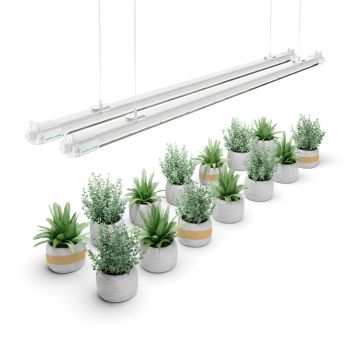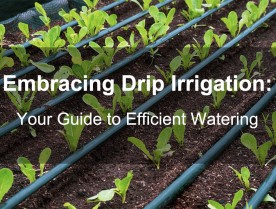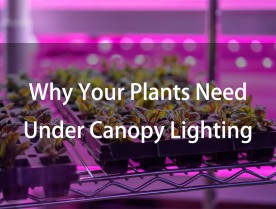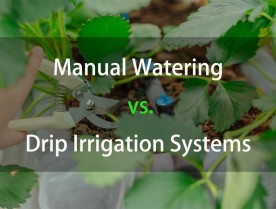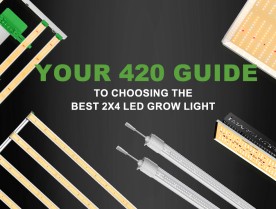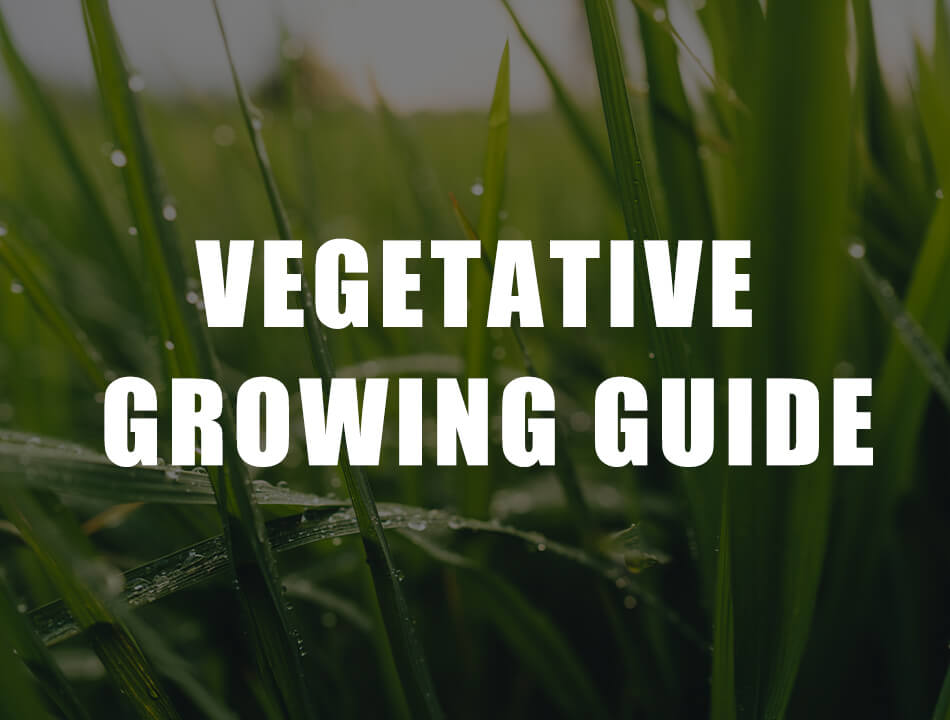
Growing weed indoors is a rewarding hobby that requires patience, attention to detail, and a solid understanding of the plant's growth stages. The vegetative stage is a critical period in the growth cycle of weed plants, during which they develop strong roots, stems, and leaves. This stage lays the foundation for later stages of growth and flowering, and it is essential to provide the plant with the right conditions to maximize yield and produce high-quality buds.
In this guide, we will provide a comprehensive overview of the vegetative stage. Whether you are a beginner or an experienced grower, this guide will equip you with the knowledge and tools needed to cultivate healthy and vibrant weed plants in the vegetative stage.
What Is the Vegetative Stage In Weed Plants?

The vegetative stage is the second phase of a weed plant's life cycle, following the seedling growth stage. This vegetative stage last anywhere from 3-16 weeks, depending on the strain and environmental conditions.
During this phase, weeds undergo significant growth and development as they prepare for the flowering stages. They focus on developing strong roots, stems, and leaves, which are critical for supporting a plant's development and the formation of buds later on, as the plants establish their structures and build up their internal resources. And they will increase significantly in size and height, becoming bigger plants, with some strains growing up to a foot per week.
The vegetative stage is a critical time for the plant's health and vitality, and proper care during this period can have a great impact on the yield and quality of the final product.
The Importance of the Vegetative Stage for Weed Growth

The vegetative stage is a critical phase to grow plants quickly and healthily, and its importance cannot be overstated.
As noted above, vegetating plants establish a robust root system and develop strong stems and leaves. As a result, the vegetative stage provides an opportunity for growers to train their plants to achieve desired shapes and sizes, such as using techniques like topping and pruning to promote bushier growth. Additionally, the vegetative stage is when plants build up energy reserves that will be crucial for the flowering process, where the plant will devote most of its energy to producing buds.
Proper care and management during the vegetative stage can also help ensure a healthy and productive harvest, with factors such as lighting, temperature, humidity, and nutrient balance all playing crucial roles.
The vegetative stage sets the foundation for the plant's entire life cycle, so it is essential for growers to provide the optimal conditions for their plants to thrive during this period.
How To Identify If Weed Plants Are In The Vegetative Stage

When a weed plant is transitioning from the seedling stage to the vegetative stage, there are a few key indicators to look out for.By observing the growth rate, stem elongation, development of true leaves, and branching pattern, growers can identify when their weed plants are leaving the seedling phase and entering the vegetative stage.
Firstly, the young plants will start to develop the first true leaves, which are larger and more robust than the initial rounded cotyledon leaves. These true leaves will also have serrated edges, unlike the smooth edges of the cotyledon leaves.
The stem of the plant will also begin to elongate, and the plant will exhibit more upright growth as it transitions into the vegetative stage. More nodes and branches will be developed as it continues to grow.
Another way to identify if a weed plant is leaving the seedling phase is to observe its overall size and growth rate. As the plant transitions into the vegetative stage, it will start to grow more rapidly and will become larger and more robust.
What Should Growers Do For Vegetative Stage of Weed

The vegetative plants will establish a strong foundation for future growth. Here are some tips for maximizing yield during the vegetative stage:
Temperature: It's essential to maintain an optimal temperature range between 70-85°F (21-29°C) during the vegetative stage. Higher temperatures can cause the plants to grow too quickly and reduce yields, while lower temperatures can slow growth and increase the risk of diseases.
Humidity: The ideal humidity range for vegetative growth is between 45-60%. High humidity can lead to mold and other plant diseases, while low humidity can cause the plants to become dehydrated and stunt growth.
Soil (Growing Medium): Choosing the right soil (growing medium) for your weed plants can help maximize yield during the vegetative stage. Look for soil that is rich in nutrients and has good drainage to promote healthy root growth.
Nutrients: Providing the right nutrients during the vegetative stage is crucial to ensure healthy plant development. Nitrogen, phosphorus, and potassium are essential macronutrients needed in this phase, among which a high level of nitrogen is highly recommended.However, avoid overfeeding your plants, which can damage the roots and decrease yields. Follow the recommended feeding schedule for your specific plant variety.
pH Level: Maintaining proper pH levels in soil or hydroponic systems is crucial to maximize nutrient absorption. A pH of around 6.5 is optimal for most strains of weed plants.
Watering Schedules: Watering should be done regularly and the amount should be increased, but avoid overwatering, which can lead to root rot and other issues. Soil should be moist but not saturated, and the plant should be allowed to dry out between watering cycles. If available, try using a drip irrigation system to set regular watering schedules.
Lighting Requirements: During the vegetative stage, the plant requires a minimum of 18 hours of light and 6 hours of darkness as a light cycle. (Please note if you're growing outdoor plants the light cycle is different) Providing the right intensity and spectrum of light is crucial to ensuring optimal growth and yield. A full spectrum with balanced wavelengths and a PPFD of 600~800 is recommended. Check the PPFD Requirements of each weed growth stage here.
Pruning and Training: Pruning and training techniques such as topping, FIMing, and LST can help create more lateral branches, increase light penetration, and promote more even growth. Remember to leave enough grow space (about one foot per plant) to thrive.
Air Circulation: Providing proper air circulation can help prevent mold and other plant diseases, as well as strengthen the plant's stem and branches.
CO2 Supplementation (optional): Supplementing with CO2 during the veg stage can help boost plant growth significantly. But it requires a different and experienced control over all the above conditions.
Other Common Mistakes To Avoid During The Vegetative Growth

There are several common mistakes that most growers can make during the veg stage that can negatively impact your indoor plants. By being aware of these potential mistakes and taking steps to avoid them, indoor growers can help ensure healthy vegetative growth and maximize their yields.
Not Providing Enough Space For Root Development
This can cause the roots to become root-bound and may limit nutrient uptake and growth potential, especially when the plant is in a small container.
Transplant the plant into a larger container at the veg stage of weed to ensure healthy root development. This can typically be done when the plant has outgrown its current container or when it's showing signs of being root-bound, such as slow growth, wilting, or visible roots through the drainage holes. Or just use a larger container than initially needed to allow for future growth
Overcrowding Plants
During the vegetative growth stage, the leaves develop quickly and if growers utilize CO2, the growth rate will be much faster. When plants are too close together, they compete for resources such as nutrients, water, and light, which can hinder their growth and increase the risk of disease and pest problems, as plants that are too close together are more susceptible to fungal and bacterial infections.
To space out your plants properly is a good way to go. Use the "one plant per square foot" rule, which means each plant should be given a square foot of space to grow in, to allow each plant to have ample room to spread out its roots and leaves.
Another way is to use different types of training techniques such as topping, low-stress training, or SCROG (screen of green) method to control the growth of the plants and create an even canopy. These methods can help keep the plants from becoming too bushy or overcrowded, allowing for better air circulation and light penetration.
Lack Of Pest and Disease Management
Pests and diseases can quickly spread among plants, causing damage and reducing yield. Common pests that can affect weed plants include spider mites, thrips, and aphids. Fungal diseases like powdery mildew and root rot can also be a problem.
To prevent pest and disease problems during the veg stage, growers should regularly inspect their plants and remove any infected or damaged material. It is also essential to maintain a clean growing environment and practice good hygiene, such as washing hands and tools before handling plants. Finally, organic pest control methods, such as introducing beneficial insects like ladybugs and using neem oil sprays, can also be effective in managing pests and diseases during the veg stage.
The Transition to the Flowering Stage

Starting the flowering stage too early or too late can have negative effects, so indoor growers should also pay close attention to the timing of the transition.
In general, cannabis plants will begin to show pre-flowers around 4-6 weeks from the vegetative stage, but this can vary depending on the strain and growing conditions. Pre-flowers are small, undeveloped buds that appear at the nodes where the branches meet the main stem of the plant. These buds can be identified by their distinctive shape, which is different from the regular leaf growth of the plant.
Here are some signs that indicate a weed plant is entering the pre-flowering stage:
-
Formation of stipules: The first sign that your plant is transitioning into the pre-flowering stage is the emergence of small leaf-like structures known as stipules at the base of the branches.
-
Development of new growth: During the pre-flowering stage, the plant will continue to grow new leaves and branches.
-
Appearance of pre-flowers: As the plant matures, it will begin to develop pre-flowers, which are small structures that appear at the base of the branches. Pre-flowers can be male or female, and they are a sign that the plant is getting ready to enter the flowering.
-
Change in leaf shape: During the pre-flowering phase, some cannabis strains may exhibit a change in leaf shape. For example, the leaves may become narrower and more pointed.
-
Increase in odor: As the plant prepares for flowering, it may start to produce a more pungent odor. This is due to the development of terpenes, which are aromatic compounds that give cannabis its characteristic scent.
Once pre-flowers have been identified, it is important to switch the lighting schedule to 12 hours of light and 12 hours of darkness to start flowering. Andkeep an eye out for signs of nutrient deficiencies and adjust your feeding schedule accordingly as the plant will require different nutrients to support bud formation
To Care For The Vegetative Growth Phase

The vegetative stage in weed growth is a critical period that sets the foundation for healthy and robust plants. By providing the right environmental conditions, nutrients, and proper hours of light care, growers can maximize the potential of their plants and achieve higher yields. By following the tips and guidelines in this guide, growers can ensure a successful vegetative phase and set their plants up for a successful flowering stage.


